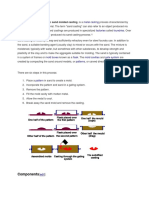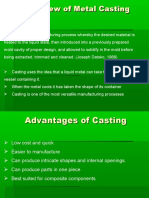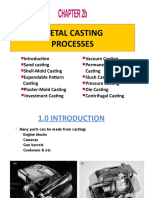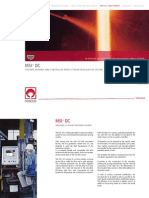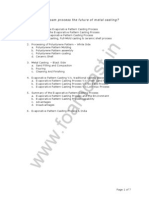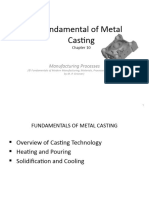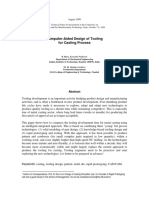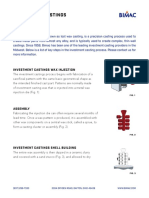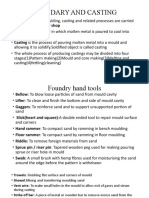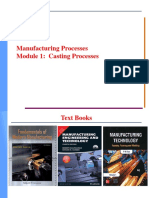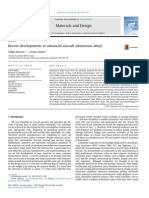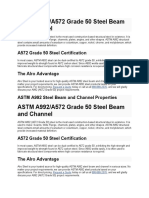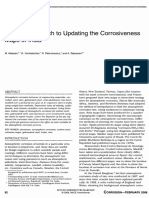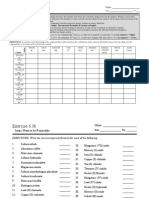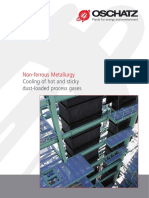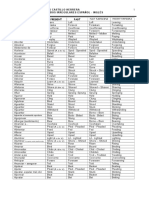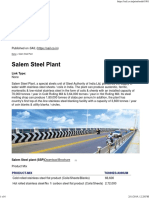0% found this document useful (0 votes)
75 views43 pagesCasting 1
The document provides information on the sand casting process including key terminology, pattern materials and types, and applications of casting. It discusses the important steps of casting such as pattern making, mold making, core making, melting and pouring, and cleaning. It also describes common casting defects and how to prevent them. Key terms like risers, gates, sprues, and allowances are explained in detail.
Uploaded by
29011988Copyright
© Attribution Non-Commercial (BY-NC)
We take content rights seriously. If you suspect this is your content, claim it here.
Available Formats
Download as PPT, PDF, TXT or read online on Scribd
0% found this document useful (0 votes)
75 views43 pagesCasting 1
The document provides information on the sand casting process including key terminology, pattern materials and types, and applications of casting. It discusses the important steps of casting such as pattern making, mold making, core making, melting and pouring, and cleaning. It also describes common casting defects and how to prevent them. Key terms like risers, gates, sprues, and allowances are explained in detail.
Uploaded by
29011988Copyright
© Attribution Non-Commercial (BY-NC)
We take content rights seriously. If you suspect this is your content, claim it here.
Available Formats
Download as PPT, PDF, TXT or read online on Scribd
/ 43








